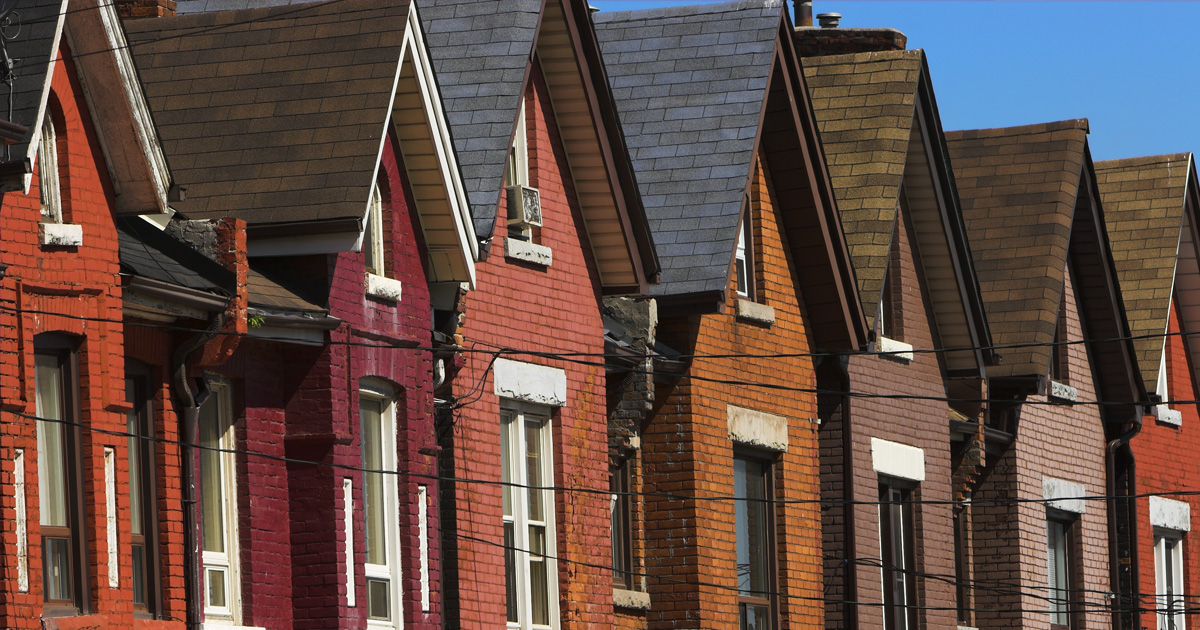No two people experience homelessness the same way. Some have a mental health diagnosis, some do not. Some are living with addiction, others are not. Some spend each night in shelter, while others sleep in doorways, cars, or encampments.
Yet, everyone experiencing homelessness shares one thing in common: they do not have a safe or appropriate place to live.
Similarly, it is unlikely that any two people have the same path out of homelessness. Some will find long term stability by reconnecting with family or friends. Others will find new housing, get a new job, or connect with benefits that quickly allow them to exit homelessness on their own. Some will need more intensive supports like rapid re-housing or permanent supportive housing to help them find housing, pay for it, and maintain it.
Yet, there is one thing that can resolve anyone’s homelessness crisis: reconnecting with permanent housing.
Housing First (Not Housing Only)
This is what we mean by Housing First: that homelessness is a problem with a solution, and that the solution is housing. For everyone. Whether you follow the rules or not. Whether you are “compliant” with treatment or not. Whether you have a criminal record or not. Whether you have been on the streets for one day or ten years. Permanent housing is what ends homelessness. It is the platform from which people can continue to grow and thrive in their communities.
Housing First is a philosophy that values flexibility, individualized supports, client choice, and autonomy. It never has been housing only, and it never should be.
Supportive services are part of the Housing First model. That might include formal support services, like a doctor, therapist, or social worker. It might involve informal supports, like connecting with family, friends, or faith groups.
But, in Housing First, these supports are not prescribed; people have the agency to select the supportive services they need and want, tailoring their supports to their own unique situation.
One Size Does Not Fit All
However, in communities across the country, many service providers, politicians and concerned citizens continue to dismiss Housing First as a “one-size-fits-all” approach. Oddly enough, the alternatives recommended frequently include approaches like transitional housing, or drug and alcohol treatment programs. By their very nature, these approaches assume people experiencing homelessness have a predictable set of needs and must complete a prescribed process in order to be “ready” for housing.
The Housing First approach is the polar opposite of a one-size-fits-all approach. Nothing in the Housing First philosophy precludes someone from pursuing the services, supports and housing that they need and want. If those services include mental health or addiction treatment, they are connected to it. If the housing they want is sober living, they are free to select it. Nobody is required to participate in a service that they do not want in order to receive or retain housing. In fact, requirements like these would assume a singular, “one-size-fits-all” path from homelessness to housing.
The Leaders Agree
In his plenary speech at the 2019 Solutions for Individual Homeless Adults National Conference in San Diego, Matthew Doherty, Executive Director for the U.S. Interagency Council on Homelessness (USICH) provided a passionate defense of the model:
We have the opportunity to not waste precious time on endless debates regarding whether Housing First works for ‘this population’ or ‘in this community’ and to resist bogus arguments that a focus on Housing First imposes a one-size-fits-all solution on people or programs. We can speak the real truth that Housing First approaches are the opposite of one-size-fits-all and help ensure that we don’t leave anyone behind.”
He was echoed later in the conference by Housing and Urban Development (HUD) Secretary Ben Carson who stated that “the evidence then and now supports Housing First.”
USICH recently issued a “resource roundup” of some of the best articles, videos and tools to help communities understand and implement the Housing First model. It is a great place for anyone to start to gain an understanding of the principles and practice of the approach.
Simple, but Not Easy
Housing First is not easy. Recruiting landlords is not easy – especially when applicants have limited income or credit, or a history of evictions. Helping someone re-learn the intricacies of tenancy is not easy. Navigating a bureaucracy to secure mental and physical health care is not easy.
But, Housing First is simple. Nothing in any person’s history or present precludes them from being able to be housed.
While the challenges to getting into that housing and maintaining it may be many, the goal is the same: housing is the solution to homelessness.
Stay Updated: Solutions, Stories, and Ways to Make an Impact
Sign up to receive updates on the Alliance’s work, including the latest research, advocacy efforts, and real stories of progress — plus ways you can help drive lasting change.














